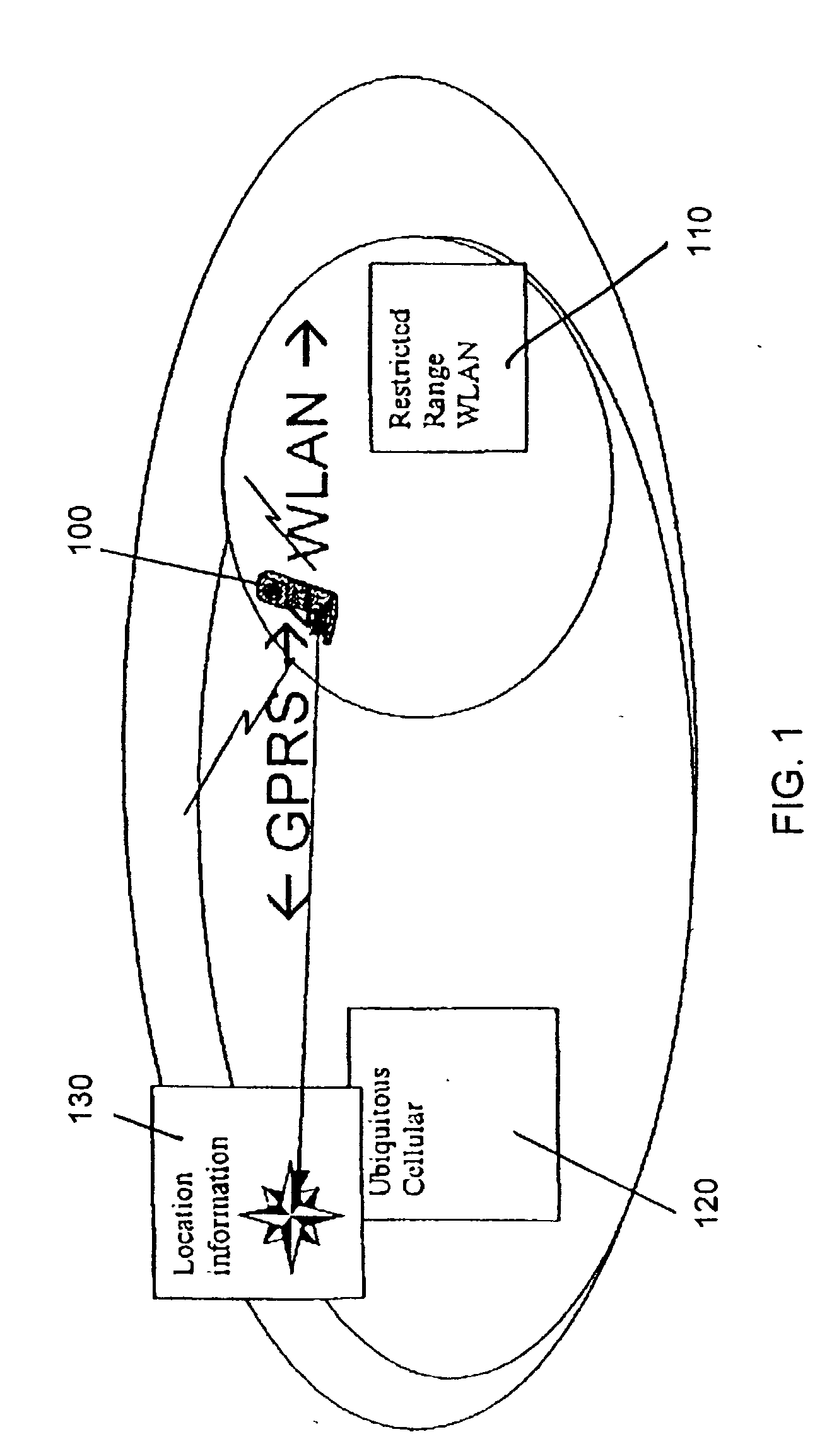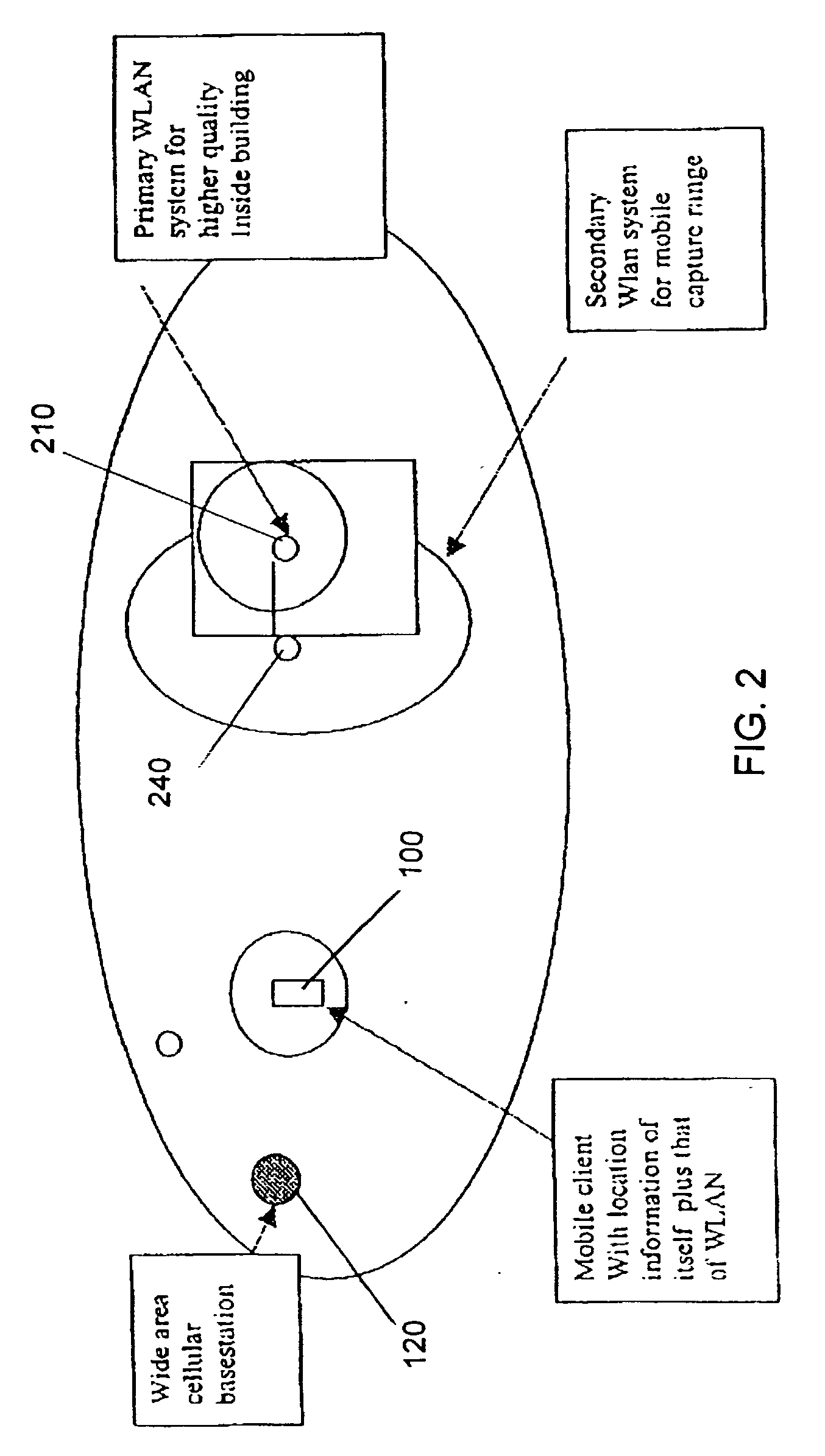Location service assisted transition between wireless networks
a technology of wireless network and location service, applied in the field of radio systems, can solve the problems of high data transfer cost/subscription, low data rate, prior art systems failing to recognize or address problems,
- Summary
- Abstract
- Description
- Claims
- Application Information
AI Technical Summary
Problems solved by technology
Method used
Image
Examples
Embodiment Construction
[0025] In accordance with the principles of the present invention, location Information available from a navigational system, such as the Global Positioning System (GPS) is used to beneficially transition a mobile client, such as a handset, between a Wide Area Network (WAN), such as a cellular telephone network, and a Wireless Local Area Network (WLAN), such as a system conforming to the 802.11 standard, (and vice versa), under user control and initiation. The invention may also be used to transition between two or more WLANs, for example, WLANs with different ranges and data rates.
[0026] The transition is of a `break-before-make` type. In other words, the mobile client disconnects from one network, and turns off the associated radio circuitry, before turning on the radio circuitry needed to connect to another network and actually connecting to that network. This overcomes problems such as mutual interference and receiver desensitization by ensuring that the mobile client only trans...
PUM
 Login to View More
Login to View More Abstract
Description
Claims
Application Information
 Login to View More
Login to View More - R&D
- Intellectual Property
- Life Sciences
- Materials
- Tech Scout
- Unparalleled Data Quality
- Higher Quality Content
- 60% Fewer Hallucinations
Browse by: Latest US Patents, China's latest patents, Technical Efficacy Thesaurus, Application Domain, Technology Topic, Popular Technical Reports.
© 2025 PatSnap. All rights reserved.Legal|Privacy policy|Modern Slavery Act Transparency Statement|Sitemap|About US| Contact US: help@patsnap.com



